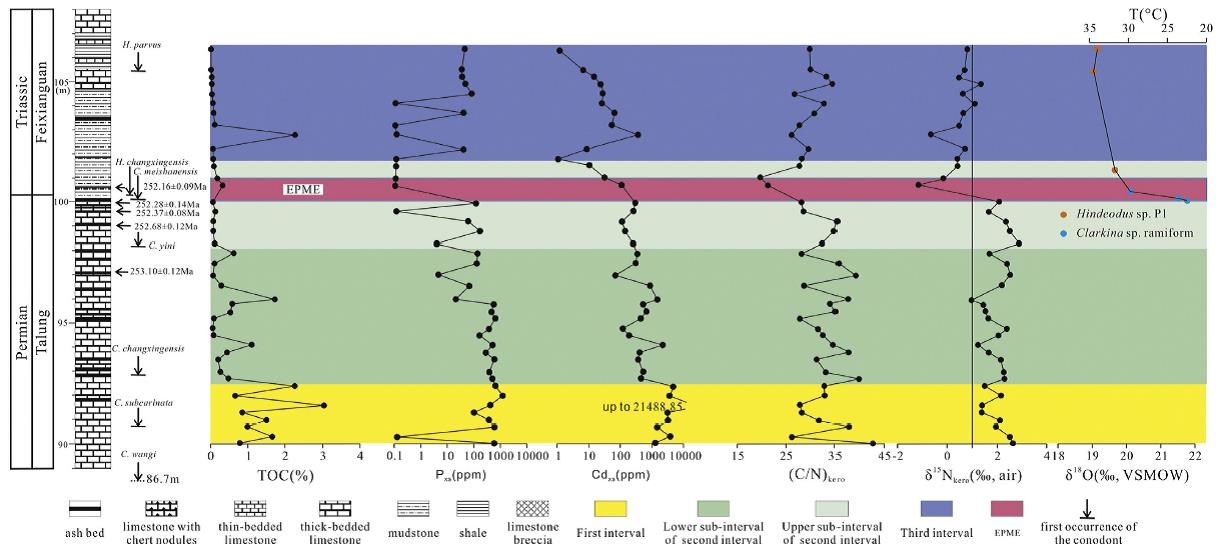The end-Permian mass extinction (EPME) was the most severe extinction event of the Phanerozoic. To investigate oceanic redox conditions around the EPME, Dr. XIANG Lei and colleagues from Nanjing Institute of Geology and Palaeontology, Chinese Academy of Sciences conducted a series of geochemical analyses, including iron speciation, trace element geochemistry, total organic carbon (TOC), and nitrogen isotopes of kerogen (δ15Nkero), around the EPME at the Shangsi section, South China. They distinguished three intervals with different redox conditions based on iron speciation. During the first interval (early and middle Changhsingian), bottom waters were pervasively euxinic. In the second interval (late Changhsingian and the EPME), bottom water fluctuated between oxic and anoxic, but non-sulfidic conditions, with the oxic mode becoming increasingly predominant over time. During the third interval, following the EPME, bottom waters appeared to have been consistently anoxic, though again not pervasively euxinic. This redox history is supported by enrichments in the authigenic fraction of redox sensitive elements. These relatively high δ15Nkero values (>1.0‰) corresponding with Changhsingian euxinia suggest reducing bottom waters did not impinge on the photic zone. The shift to values near 0‰ within and above the EPME indicates an ecological expansion of diazotrophs. Stratigraphic trends of Nixs, Cdxs, Pxs and TOC indicate that primary productivity was highest in the first interval, coinciding with euxinic bottom water, then decreased during the lower part of Interval 2 and remained at low level through the remainder of the studied section. The temporal relationship between redox condition and primary productivity suggest that euxinia was supported by high productivity and carbon export in the early Changhsingian. The expansion of N2-fixation coincides closely with the previously documented warming of the ocean surface at Shangsi, and may be related to reduced oceanic circulation and suppressed vertical mixing. The temporal distribution of deep-water anoxia and euxinia suggest that they were not primary causes for the extinction of benthos at Shangsi.
This research was published in Palaeogeography, Palaeoclimatology, Palaeoecology. It was supported by the National Natural Science Foundation of China.
Related information of this paper: Lei Xiang, S.D. Schoepfer, Hua Zhang*, Dong-xun Yuan, Chang-qun Cao, Quan-feng Zheng, C.M. Henderson, Shu-zhong Shen, 2016. Oceanic redox evolution across the end-Permian mass extinction at Shangsi, South China.Palaeogeography, Palaeoclimatology, Palaeoecology.http://dx.doi.org/10.1016/j.palaeo.2015.10.046

Stratigraphic distributions of redox proxies in the Shangsi section, South China

Stratigraphic distributions of TOC, Pxs, Cdxs, (C/N)kero, δ15Nkero, and δ18O in the Shangsi section
